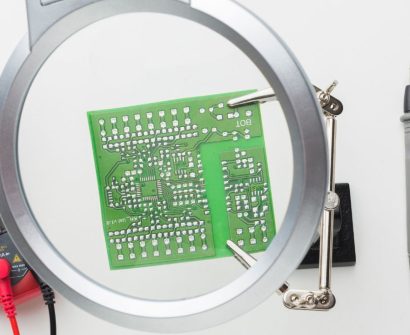
Semiconductors are the foundation of modern electronic devices, with silicon dominating the industry for decades. However, the rise of organic semiconductors is reshaping the landscape of electronics by enabling lightweight, flexible, and cost-effective solutions. These materials are revolutionizing applications in display technology, wearable devices, and even medical sensors.
What Are Organic Semiconductors?
Organic semiconductors are carbon-based materials that exhibit semiconductor properties, allowing them to conduct electricity under certain conditions. Unlike traditional inorganic semiconductors such as silicon, organic semiconductors consist of small molecules or polymers with conjugated pi-electron systems. Their unique molecular structures enable them to be processed using low-cost and scalable methods such as solution processing and printing techniques.
Key Properties of Organic Semiconductors
- Flexibility and Lightweight: Organic materials can be integrated into flexible substrates, making them ideal for bendable and wearable electronics.
- Low-Cost Manufacturing: Solution-based fabrication techniques, such as inkjet printing and roll-to-roll processing, enable cost-efficient large-area production.
- Tunable Electronic Properties: Molecular design allows customization of electronic and optical properties to meet specific application needs.
- Environmental Stability: Advances in material engineering have improved the durability of organic semiconductors, making them more resistant to degradation.
Applications of Organic Semiconductors
Organic semiconductors are being integrated into various emerging technologies, including:
1. Organic Light-Emitting Diodes (OLEDs)
OLEDs are widely used in smartphone displays, televisions, and wearable devices due to their high contrast, vibrant colors, and energy efficiency. Their flexibility makes them suitable for foldable and rollable screens.
2. Organic Field-Effect Transistors (OFETs)
OFETs are used in flexible circuits, biosensors, and low-power electronics. They enable the development of lightweight and transparent electronic components for next-generation displays and RFID tags.
3. Organic Photovoltaics (OPVs)
Organic solar cells offer a lightweight and flexible alternative to silicon-based photovoltaics. Their ability to operate under low-light conditions makes them suitable for indoor energy harvesting and portable power sources.
4. Wearable and Bioelectronics
Organic semiconductors are used in health-monitoring devices, biosensors, and smart textiles. Their biocompatibility makes them ideal for implantable electronics and flexible medical sensors.
Challenges and Future Outlook
Despite their advantages, organic semiconductors face challenges such as lower charge carrier mobility, shorter lifespan, and sensitivity to environmental factors like moisture and oxygen. However, ongoing research in material engineering, doping techniques, and encapsulation methods is steadily overcoming these limitations.
The future of organic semiconductors looks promising with advancements in perovskite-organic hybrid materials, self-assembling molecules, and novel fabrication techniques. As the demand for flexible and sustainable electronics grows, organic semiconductors will play a crucial role in shaping next-generation technology.
Conclusion
Organic semiconductors are paving the way for a new era of electronics, offering flexibility, low-cost production, and innovative applications in diverse fields. With continuous research and development, they have the potential to redefine how we interact with electronic devices, leading to smarter, more efficient, and environmentally friendly technology solutions.







